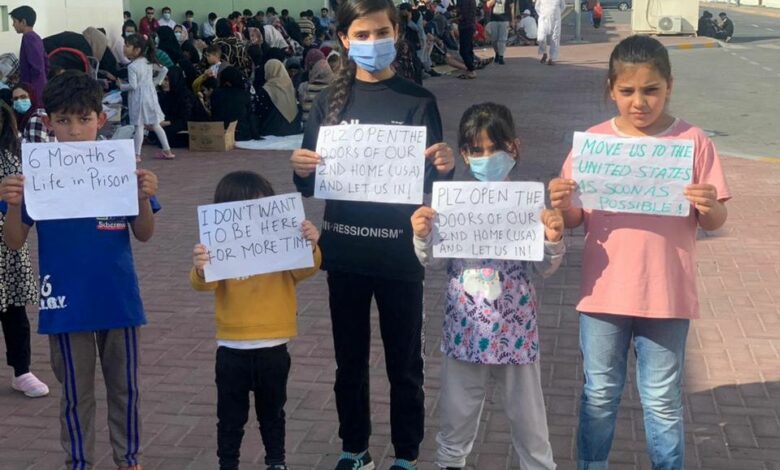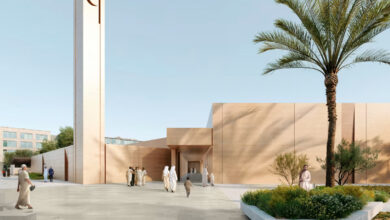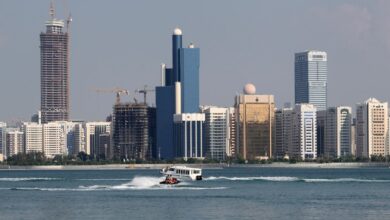
DUBAI, Feb 10 (Reuters) – Hundreds of Afghans have launched a rare protest at a United Arab Emirates facility where they have been housed since fleeing their homeland last year, holding banners pleading for freedom and demanding to be sent to the United States to be resettled.
Thousands of Afghans were last year evacuated to the Gulf Arab state on behalf of the United States and other Western countries amid the chaotic U.S.-led withdrawal from Afghanistan and return to power of the hardline Islamist Taliban movement.
The UAE, a close U.S. partner, agreed to provide Afghans with temporary housing as they waited to be resettled elsewhere.
Six months later, however, many are still in the UAE, living in tightly controlled facilities.
Protests started on Wednesday and continued on Thursday, two demonstrators told Reuters on the condition of anonymity, fearing retribution from authorities for speaking out.
Videos sent to Reuters showed men, women and children calling on Washington to welcome them to their second home.
Similar videos and images were widely shared on social media.
The two protesters, one of whom shared the videos, said the rally was triggered by the persistent lack of information on when the Afghans would be resettled.
One of the protesters said conditions in the facilities were prison-like, and that as protests broke out some Afghans had been detained by Emirati authorities.
A U.S. embassy official visited the facility on Thursday after the protests had started, and said there was no clear timeline for all to be processed and that it was unlikely all would ever go to the United States, one protester said.
The UAE government and the U.S. Embassy in Abu Dhabi had no immediate comment on the protests.
Shawn VanDiver, a U.S. Navy veteran and president of #AfghanEvac, a coalition of volunteer groups, said the Afghans were understandably frustrated and that there was a shared, global responsibility of being open and honest with them.
“The coalition is going to do everything they can to hold the U.S. government and others to clear, concise and accurate communications,” he said.
It is unclear how many Afghans are being housed in the UAE, which last September said it had evacuated 9,000 Afghan nationals who were on their way third countries.
Advocates and protesters estimate there are 12,000 housed across two facilities in Abu Dhabi.
The United States is prioritizing those who had visas or applications to go the United States but two sources familiar with the Abu Dhabi facilities said many there had neither.
Along with individuals who worked with the U.S. and the Afghan armed forces, the facility includes people who have no clear pathway to be resettled in the United States or a third country.
A protest sign at one of the Abu Dhabi facilities read: “When we were evacuated, the (U.S.) dept (department) of defence had the control of the (Kabul) airport. No one came by themselves.”
Ahmad Mohibi, a former U.S. counter-terrorism adviser in Afghanistan who has assisted those fleeing Afghanistan, said U.S. flights carrying Afghans from the UAE stopped in November.
Some Afghans had threatened to go on a hunger strike in protest as they wait for resettlement, while a small group had asked to return to Afghanistan, he said.
“There is no transparency,” Mohibi said, criticising the U.S. resettlement process for the Afghans in the UAE facilities.




